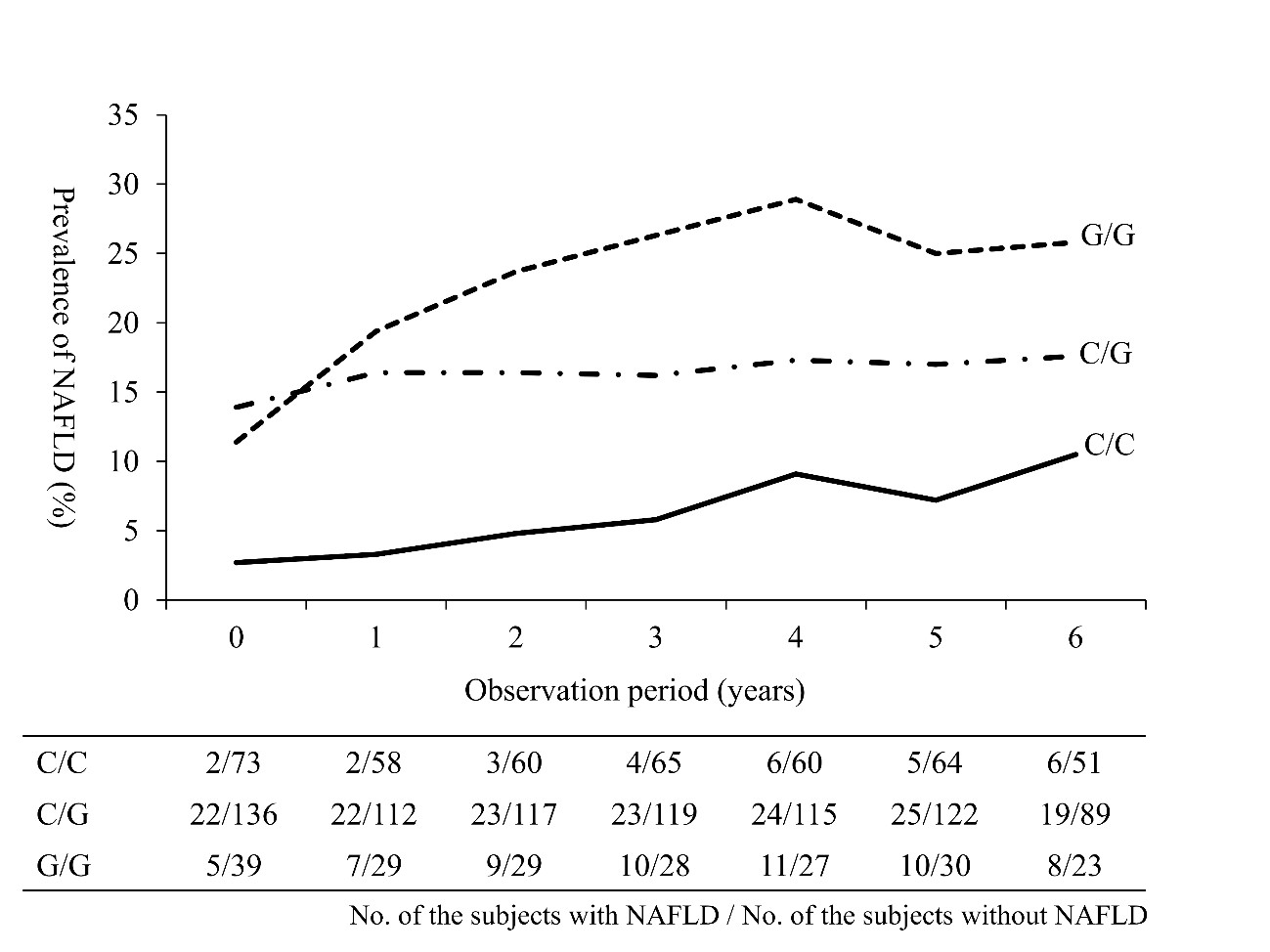Gene mutation contributes to liver disease in patients of normal weight
Non-alcoholic fatty liver disease (NAFLD) is a major worldwide health problem. The disease is strongly associated with obesity and has been found in a high percentage Asian patients of normal weight. The PNPLA3 mutant genotype has been consistently shown to be a major factor in the development of NAFLD, but the effect of a patient’s weight on the relationship between NAFLD and the mutant gene had not been determined, until now.A gene mutation has been found to contribute to non-alcoholic fatty liver disease (NAFLD), a form of liver disease closely linked to obesity, in normal weight subjects. Carriers of the PNPLA3 mutant genotype were found to be at a greater risk for NAFLD and other health problems compared to non-carriers even when the carrier was not obese. This influence of weight status on the interaction between the mutant gene and NAFLD was clarified by researchers at Kumamoto University and the Japanese Red Cross Kumamoto Hospital in Japan.
Two types of studies were performed on subjects from a health screening program of the Red Cross Kumamoto Hospital, a cross-sectional study of 740 subjects and a retrospective longitudinal study of 393 subjects who had five years of available medical records. Those with habitual alcohol intake and/or with positive hepatitis B and C tests were excluded from analysis regarding the risk for NAFLD. The associations between the genotype and the risk of NAFLD or a decline in renal function were analyzed among overweight (BMI ≥ 25 kg/m2) or normal weight (BMI < 25 kg/m2) subjects.
Dr. Kentaro Oniki’s group provided preliminary findings that even normal-weight carriers of the mutant genotype (about 20% of all Japanese people) are at a higher risk for NAFLD and renal function dysfunction when compared to those without the gene. This suggests that the mutation may be used for early classification of individuals at high-risk for NAFLD and decreased renal function no matter their weight.
“We hope that clarifying the risk factors for NAFLD among normal-weight subjects will help to identify susceptible populations for the early prevention and treatment of NAFLD and its complications,” says Dr. Oniki. “Especially in Asians.”
The study is available in a July 22nd, 2015 publication of the Open Access journal PLOS ONE.
http://journals.plos.org/plosone/article?id=10.1371/journal.pone.0132640


